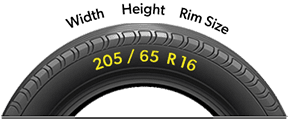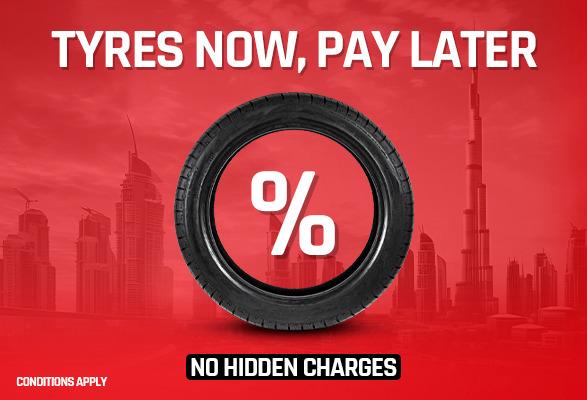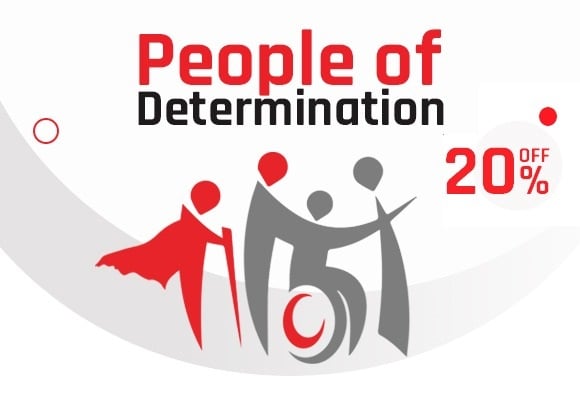Driving in the UAE: 6 Updated Speed Limits to Avoid Fines in 2025
The United Arab Emirates is renowned for its world-class road infrastructure, but with great roads come strict regulations to ensure safety. Speeding remains one of the leading causes of accidents and fines in the UAE, with hefty penalties that can include fines, black points, and even vehicle impoundment.
To help you stay compliant and safe, we’ve compiled a detailed guide to six recently updated speed limits across Abu Dhabi, Dubai, Sharjah, and Ras Al Khaimah, effective as of April 2025. Whether you’re a daily commuter or a visitor, knowing these changes can save you from costly fines and keep UAE roads safer for everyone.
Why Speed Limit Updates Matter in the UAE
The UAE’s authorities, including Abu Dhabi Mobility, Dubai’s Roads and Transport Authority (RTA), Sharjah Roads and Transport Authority, and Ras Al Khaimah Police, regularly review and adjust speed limits to enhance road safety, reduce road accidents, and accommodate changing traffic patterns. These updates are often based on data from intersections, accident rates, and urban development. Ignoring them can lead to severe consequences:
- Fines: Ranging from AED 300 to AED 3,000, depending on how much you exceed the limit.
- Black Points: Accumulating 24 points within two years can result in a license suspension.
- Vehicle Impoundment: Speeding by over 60 km/h may lead to your car being impounded for up to 60 days.
By staying informed about the latest speed limit changes, you can avoid these penalties and contribute to safer roads across the Emirates.
6 Updated Speed Limits You Need to Know in 2025

Here’s a breakdown of the six key speed limit changes across the UAE, along with practical tips to stay compliant:
1. Sheikh Khalifa bin Zayed International Road (E11), Abu Dhabi
- Previous Speed Limit: 160 km/h
- New Speed Limit: 140 km/h
- Effective Date: April 14, 2025
- Details: This major highway, connecting Abu Dhabi with other emirates, has seen its speed limit reduced to improve safety on one of the UAE’s busiest routes. Abu Dhabi Mobility announced this change to address high-speed incidents and ensure smoother traffic flow.
- Tip: Use cruise control to maintain a steady speed, especially on long stretches. Abu Dhabi has a zero-tolerance policy for speeding, meaning no grace buffer exists—exceeding 140 km/h by even 1 km/h can trigger Abu Dhabi traffic fines.
2. Abu Dhabi–Sweihan Road (E20), Abu Dhabi
- Previous Speed Limit: 120 km/h
- New Speed Limit: 100 km/h
- Effective Date: April 14, 2025
- Details: This road, popular for connecting Abu Dhabi to inland areas, now has a lower speed limit to enhance safety in areas with increasing residential and commercial development. The reduction aims to minimize accidents near intersections and entry points.
- Tip: Watch for updated UAE road signs and red pavement markings, which Abu Dhabi City Municipality uses to highlight speed limit changes. Slow down when approaching populated areas along this route.
3. Sheikh Zayed bin Hamdan Al Nahyan Street, Dubai
- Previous Speed Limits: Varied by section
- New Speed Limits:
- Between Dubai Al Ain Road and Academic City Roundabout: Increased to 100 km/h
- From Academic City Roundabout to Al Khawaneej Street: Adjusted to 90 km/h
- Effective Date: Implemented in 2024, signage updated for 2025
- Details: Dubai’s RTA and Dubai Police standardized these limits to optimize traffic flow on this key arterial road. The increase to 100 km/h in one section reflects improved road conditions, while the 90 km/h zone accounts for denser traffic near Al Khawaneej.
- Tip: Dubai offers a 20 km/h grace buffer, so you can drive up to 120 km/h or 110 km/h in these zones without penalty. However, stick to posted limits near roundabouts to avoid radar detection.
4. Al Amardi Street, Dubai
- Previous Speed Limit: Varied
- New Speed Limit: Standardized to 90 km/h between Al Khawaneej Street and Emirates Road
- Effective Date: Implemented in 2024, reinforced in 2025
- Details: This standardization simplifies driving on Al Amardi Street, a busy route connecting residential and industrial areas. The RTA updated signage and road markings to ensure clarity for drivers.
- Tip: Be cautious during peak hours, as traffic can be heavy. Use navigation apps like Waze to stay updated on real-time speed limit changes or roadworks.
5. Al Wahda Road and Al Ittihad Road, Sharjah
- Previous Speed Limit: 100 km/h
- New Speed Limit: 80 km/h
- Effective Date: Implemented in 2024, signage updated for 2025
- Details: The Sharjah Roads and Transport Authority, in coordination with Sharjah Police, reduced the speed limit on the stretch between the Abu Shaghara interchange and Al Taawun Bridge. This change targets a high-traffic corridor frequented by Dubai-Sharjah commuters to reduce accidents and congestion.
- Tip: Sharjah’s 20 km/h grace buffer allows driving up to 100 km/h without a fine, but stay vigilant for speed cameras, especially near interchanges. Slow down during rush hours to avoid sudden braking.
6. Sheikh Mohammed bin Salem Street, Ras Al Khaimah
- Previous Speed Limit: 100 km/h
- New Speed Limit: 80 km/h
- Effective Date: January 17, 2025
- Details: This key route, stretching from Sheikh Mohammed bin Zayed Roundabout (Al Rafaa) to Al Marjan Island Roundabout, serves residential, commercial, and tourist areas like Al Rifaa, Al Jazira Al Hamra, and Mina Al Arab. The reduction aims to enhance safety in these busy zones.
- Tip: Look for circular blue signs indicating minimum speed limits in some sections, as Ras Al Khaimah enforces both maximum and minimum speeds on certain roads. Avoid distractions like mobile phones to stay within the limit.
Understanding UAE Speeding Penalties
To emphasize the importance of adhering to these updated limits, here’s a quick overview of UAE speeding penalties:
- Exceeding by up to 20 km/h: AED 300 fine
- Exceeding by over 30 km/h: AED 600 fine, 4 black points
- Exceeding by over 60 km/h: AED 2,000 fine, 12 black points, 30-day impoundment
- Exceeding by over 80 km/h: AED 3,000 fine, 23 black points, 60-day impoundment
In Abu Dhabi, there’s no grace buffer, so fines apply immediately upon exceeding the posted limit. Other emirates typically allow a 20 km/h buffer, but relying on it can be risky. Accumulating black points can lead to license suspension, so it’s best to drive cautiously. You can also check our guide to remove black points.
Minimum Speed Limits: Don’t Drive Too Slowly
In addition to maximum speed limits, some UAE roads enforce minimum speed limits to prevent hazards from slow-moving vehicles. For example:
- Sheikh Mohammed bin Rashid Road, Abu Dhabi: The two leftmost lanes require a minimum speed of 120 km/h and a maximum of 140 km/h. Violating the minimum incurs an AED 400 fine.
- Other Highways: Look for circular blue signs indicating minimum speeds, often 60 km/h on freeways or 40–60 km/h on urban highways.
How to Stay Compliant and Safe
Here are practical tips to help you adapt to these speed limit changes and avoid fines:
- Check Road Signs Regularly: Speed limits are marked on signboards and sometimes painted on roads. Red pavement markings in Abu Dhabi and Dubai highlight new limits.
- Use Navigation Apps: Apps like Google Maps or Waze can alert you to speed limit changes and radar locations.
- Enable Cruise Control: This helps maintain a consistent speed, especially on highways like E11 or E311.
- Avoid Distractions: Using a mobile phone while driving carries an AED 400 fine and 4 black points. Use hands-free devices if necessary.
- Stay Updated: Follow official channels like Abu Dhabi Mobility, Dubai RTA, or Sharjah Police on social media for real-time announcements.
- Drive According to Conditions: During fog, rain, or dust storms, temporary speed limits (e.g., 80 km/h in Abu Dhabi) may apply. Check electronic boards for updates.
Why These Changes Benefit UAE Drivers
While adjusting to new speed limits may feel inconvenient, these updates are designed with safety and efficiency in mind. Lower limits in high-traffic or developing areas reduce the risk of collisions, while standardized limits in Dubai simplify navigation. Higher limits on upgraded roads, like parts of Sheikh Zayed bin Hamdan Al Nahyan Street, reflect improved infrastructure, allowing faster travel where safe.
By adhering to these limits, you’re not only avoiding fines but also contributing to the UAE’s vision of zero road fatalities, a goal supported by advanced AI radar systems and strict enforcement.
Frequently Asked Questions
1. What is the grace speed limit in the UAE?
In most emirates, there’s a 20 km/h buffer above the posted limit before radars trigger a fine. For example, on a 100 km/h road, you can drive up to 120 km/h without penalty. Abu Dhabi has no grace buffer, so fines apply immediately.
2. How can I check if I have a speeding fine?
You can check fines online via:
- Dubai Police: dubaipolice.gov.ae
- Abu Dhabi Police: adpolice.gov.ae
- Ministry of Interior: moi.gov.ae
- RTA Website: rta.gov.ae You’ll need your license or vehicle plate number.
3. What happens if I accumulate too many black points?
If you reach 24 black points within two years, your license may be suspended for three months. At 36 points, it could be revoked, requiring you to retake a driving test.
4. Are speed limits different for heavy vehicles?
Yes, heavy vehicles like trucks and buses typically have lower limits (e.g., 80 km/h on highways vs. 120 km/h for cars). Always check signs for vehicle-specific limits.
5. Can I pay fines in installments?
In Dubai, you can arrange installment plans through Dubai Police or certain banks. Check with your emirate’s police department for eligibility.
Conclusion
Staying informed about speed limit updates in the UAE is essential for safe and penalty-free driving. The six changes outlined above, covering Abu Dhabi’s E11 and E20, Dubai’s Sheikh Zayed bin Hamdan Al Nahyan and Al Amardi Streets, Sharjah’s Al Wahda and Al Ittihad Roads, and Ras Al Khaimah’s Sheikh Mohammed bin Salem Street—reflect the UAE’s commitment to road safety. By following these limits, using navigation tools, and driving attentively, you can avoid fines, protect your license, and enjoy the UAE’s roads responsibly.








































